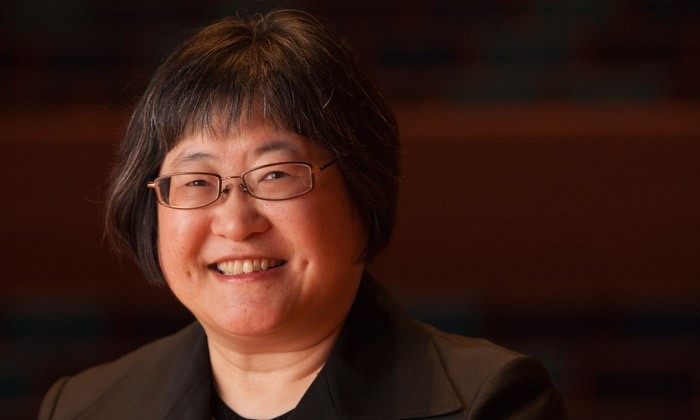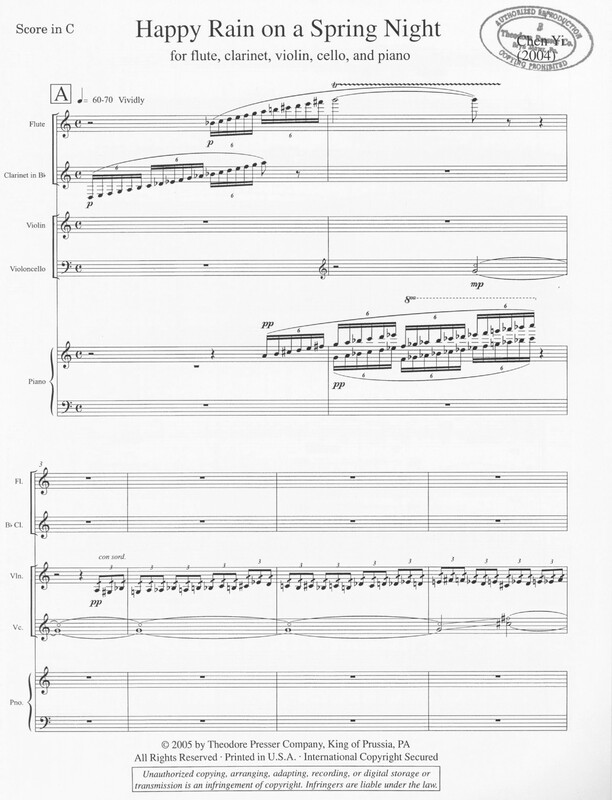Happy Rain on a Spring Night
Item
-
Score title
-
Happy Rain on a Spring Night
-
Composer
-
Chen Yi
-
Program note
-
Commissioned in 2002 by Music From Copland House, with public funds from the Composer's Commissions program of the New York State Council on the Arts, a state agency, my mixed ensemble piece Happy Rain on a Spring Night is written for all five instruments in the ensemble: flute, clarinet, violin, cello, and piano, premiered on Oct. 18, 2004 at Merkin Hall in New York. The musical imagination came from an ancient Chinese poem with the same title, written by Du Fu (712-770) in Tang Dynasty.
Happy Rain on a Spring Night
by Du Fu (712-770 in Tang Dynasty)
Happy rain comes in time,
When spring is in its prime.
With night breeze it will fall,
And quietly moisten all.
Clouds darken wild roads,
Light brightens a little boat.
Saturated at dawn,
With flowers blooming the town.
(English translation by Chen Yi from the original poem in Chinese)
It's like the welcome rain on a quiet spring night that nurtures the budding seeds, our new society is pushing us forward to the new future. The music reflects the scenes and the expression according to the meaning of the poem when it's being unfolded line by line. Although the tempo is set 60-70 quarter notes per minute throughout (played vividly, never slow down), the tension is being built up from the quiet background in the beginning, to the sustained climax towards the end. The musical image in Rehearsal A and B (measures 1-41) represents the first four lines of the poem. The woodwind instruments response to the rustling of fast moving notes on muted string triplets, decorated by occasional strokes produced by metallic string sound and high piano gestures. The music in Rehearsal C and D (measures 42-87) represents the next two lines of the poem. It's so dark, a little light in the boat is shimmering on the lake... The breathy key slaps on the flute creates a mysterious atmosphere, in a dialogue with other instruments. The cello glissandi recite the poem in the tone of Mandarin, echoed by the string harmonics. The music in Rehearsal E, F, and G (m 88-161) is a toccata, starting with the piano, which builds up a big shape, to reach the climax in m. 116, and keeps the vivid scene towards the coda (Rehearsal H, m. 162-the end), which stands on the energetic peak at the end of the piece.
According to the principle of the Golden Section, I have constructed the piece with two large parts (m. 1-115 and m. 116-192+4 since it goes faster). The GS falls onto the beginning of the climax section of the piece, which is loud and energetic. All subdivisions of the structures coincided with the numbers of proportions based on the GS principle. The music has textures changed according to the proportional arrangement throughout the piece.
 Chen Yi
Chen Yi

